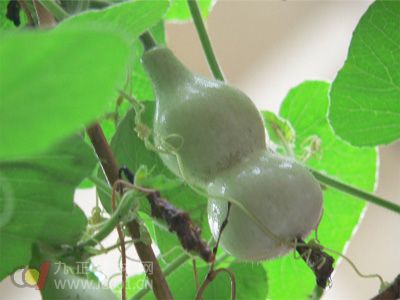Hand-held Hoist Tips for Gourds:
Choosing the right pot size is crucial. It's best to use a moderate-sized container filled with loose, well-draining loamy soil mixed with compost or organic fertilizer. Avoid using alkaline or compacted soils. A good mix would be 1:5 or 2:5 ratio of garden soil to nursery soil, or you can go directly with peat-based soil for better results.
If your soil doesn’t already contain nutrients, add 50 grams of water-soluble fertilizer or 100 grams of organic fertilizer as a base. Watering should be done regularly—especially once the vines start spreading. During hot summer days, water twice daily. To support the plant, place four pillars around the pot, about 50 cm above the surface, and create a grid-like trellis to guide the growth.
When the female vine has 4–5 leaves, allow two main vines to grow upward. Once they reach the top of the trellis, pinch off the tips to encourage the growth of side shoots. When these side shoots have 5 leaves and branches, gently bend the tip so that the fruit develops from the side shoots. Let the rest of the vine grow freely, and when it goes beyond the trellis, simply let it hang down. It’s important to prune the fruit when it reaches 5–6 in number to promote better growth.

Strong seedlings are key to successful fruiting. Make sure to apply top dressing during the growing season using fermented sesame cake or bean meal diluted in water. Add phosphorus and potassium fertilizers during the bud stage to improve fruit setting and quality. Keep the temperature around 30°C and ensure plenty of sunlight. In summer, avoid direct sun at noon by shading with leaf stalks to prevent heat stress and promote healthy growth.
Once the vine reaches about 1 meter in height, trim the top 3–4 leaves to encourage lateral growth. This helps the lower branches bear fruit earlier and makes it easier to monitor the plant. When lateral buds appear, they usually have 3–4 leaves. Female buds will look like small bumps, while male ones are more elongated. If no buds form, they’re called sliders. Sliders grow rapidly and can steal nutrients from the plant if not removed, leading to weaker fruiting branches. You can also pinch back the slider after 3–4 leaves to turn it into a fruit-bearing branch.
Hand-pollination is essential since gourds are cross-pollinated and often lack enough pollinators, especially when grown in pots. The flowers bloom in the evening, and the best time to pollinate is before 10 am the next day. Use a dry cloth or cotton swab to collect pollen from the male flower and immediately transfer it to the female. If rain is expected, cover the flowers with plastic bags beforehand to keep them dry.
After the first 1–2 fruits set, remove the earliest female flowers to focus energy on the stronger ones. When the gourd starts forming, add 5–6 solid fertilizers to the pot, and then water with a diluted liquid fertilizer (1:200) once the initial fertility fades.
The main pest is aphids. Control them similarly to field crops. I prefer using an insecticidal soap—just a small bag mixed with 30 pounds of water works well. It’s safe for humans and animals.
Electric Towel Rack, Heated Towel Rail, Towel Warmer
JIANGMEN MEIAO KITCHEN AND BATH CO.,LTD , https://www.meiaogroup.com